photoactivatable red fluorescent protein PA-TagRFP
본문
Novel photoactivatable red fluorescent protein PA-TagRFP
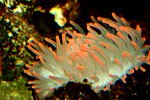
- Monomer, successful performance in fusions
- Non-fluorescent before photoactivation
- Irreversible photoactivation to a red fluorescent form by UV-violet light irradiation
- High brightness and photostability
- Recommended for super-resolution imaging
PA-TagRFP is a photoactivatable mutant of the bright monomeric red fluorescent protein TagRFP [Subach et al., 2010].
PA-TagRFP is capable of irreversible photoconversion from non-fluorescent to red fluorescent form (with excitation/
emission maxima at 562 nm and 595 nm, respectively) in response to UV-violet light irradiation.
High brightness, photostability and monomeric nature of PA-TagRFP make it an excellent protein tag for both
conventional microscopy and super-resolution PALM imaging techniques [Subach et al., 2010].
Main properties
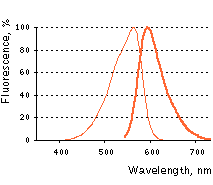
Normalized excitation (thin line) and emission (thick line) spectra for activated PA-TagRFP.
|
Characteristic |
Before / after Photoactivation |
|
Fluorescence color |
No / red |
|
Excitation maximum, nm |
- / 562 |
|
Emission maximum, nm |
- / 595 |
|
Quantum yield |
nd / 0.38 |
|
Extinction coefficient, M-1cm- |
nd /66 000 |
|
Brightness* |
0 / 25.1 |
|
pKa |
nd / 5.3 |
|
Activating light |
UV-violet (e.g. 390-420 nm) |
|
Calculated contrast, fold |
~ 540 |
|
Structure |
monomer |
|
Cell toxicity |
not observed |
|
Aggregation |
no |
|
Muturation rate at 37°C |
fast |
|
Molecular weight, kDa |
27 |
|
Polypeptide length, aa |
237 |
* Brightness is a product of extinction coefficient and quantum yield, divided by 1000.
Recommended antibodies, filter sets and laser lines
PA-TagRFP can be recognized using Anti-tRFP antibody (Cat.# AB233-AB234) available from Evrogen.
PA-TagRFP is non-fluorescent before light activation. Upon UV-violet irradiation the protein irreversibly converts to its red
fluorescent form. PA-TagRFP can be activated during both widefield imaging (e.g. the Arc-lamp irradiation, 100xoil
objective, 390-420 nm, 10-50 mW/cm2) and confocal laser scanning imaging (e.g. 405 nm laser line, estimated <
2.5 W/cm2 at the sample).
Maximal efficiency of photoactivation for PA-TagRFP is observed at 390-420 nm. The photoactivation efficiency drops
dramatically with the wavelength increasing above 420 nm.
The source of irradiation, irradiation time and intensity of activating UV-violet light must be individually adjusted for
particular instrumentation and intended application.
TRITC filter set or similar can be used for visualization of activated PA-TagRFP. Omega Optical filter sets QMAX-Red and
XF174 are recommended.
Performance and use
PA-TagRFP can be easily expressed and detected in a wide range of organisms. Mammalian cells transiently transfected
with PA-TagRFP expression vectors produce bright fluorescence upon UV-activation of PA-TagRFP in 10-12 hrs after
transfection. No cytotoxic effects or visible protein aggregation are observed.
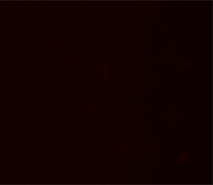
PA-TagRFP use for cell labeling.
Live HeLa cells transiently transfected with the PA-TagRFP-C expression vector were imaged during the photoactivation.
PA-TagRFP performance in protein fusions has been demonstrated in β-actin, α-tubulin, histone H2B and other models.
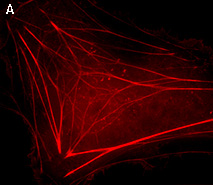
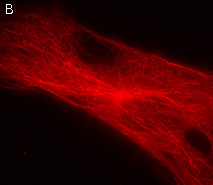
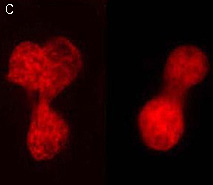
PA-TagRFP use for protein labeling in mammalian cells.
Microscopic images of HeLa cells transiently transfected with PA-TagRFP-tagged fusions after the photoactivation:
(A) β-actin; (B) α-tubulin; (C) histone H2B.
PA-TagRFP use in PALM imaging techniques
High brightness, photostability and absence of initial fluorescence signal from PA-TagRFP make it a protein tag of choice
for super resolution two-color PALM/single-particle tracking PALM imaging techniques. The excellent performance of
PA-TagRFP in two-color single-particle tracking PALM experiments was demonstrated for several PA-TagRFP-tagged and
PAGFP-tagged fusions in live COS-7 cells [Subach et al., 2010].
An example for the tracking of PA-TagRFP-tagged epidermal growth factor receptor (EGFR-PATagRFP) and PAGFP-
tagged vesicular stomatitus virus G protein tsO45 (VSVG-PAGFP) in live COS-7 cells by two-color single-particle tracking
PALM is shown below.
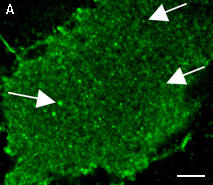
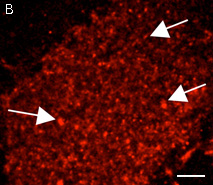
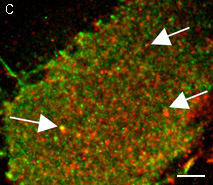
(A,B) The separate and (C) merged distribution of VSVG-PAGFP (green) and EGFR-PATagRFP (red) in PALM images.
Arrows indicate areas of apparent colocalization between the VSVG and EGFR molecules. Scale bars are 2µm.
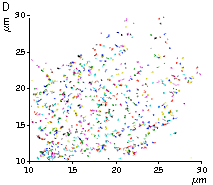
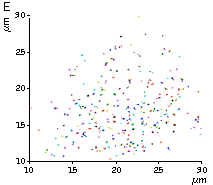
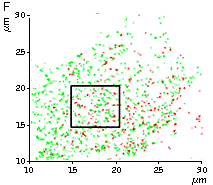
(D,E) Tracks of VSVG-PAGFP and EGFR-PATagRFP molecules lasting longer than 0.7 sec are plotted. Approximately 1635 VSVG molecules were tracked along with 627 EGFR molecules.(F) VSVG-PAGFP (green) and EGFR-PATagRFP (red) tracks are
merged.
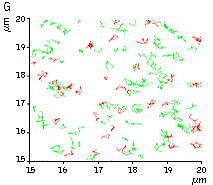
(G) A zoomed view of the region indicated by the square in (F).
References:
- Haas J, Park EC, Seed B. Codon usage limitation in the expression of HIV-1 envelope glycoprotein. Curr Biol. 1996; 6 (3):315-24. / pmid: 8805248
- Subach FV, Patterson GH, Renz M, Lippincott-Schwartz J, Verkhusha VV. Bright monomeric photoactivatable red fluorescent protein for two-color super-resolution sptPALM of live cells. J Am Chem Soc. 2010; 132 (18):6481-91. / pmid: 20394363
Ordering information ;
|
Catalog No. |
Product Name |
Description |
Size |
|
|
|
PA-TagRFP expression/source vectors | |
|
FP811 |
pPA-TagRFP-C |
Mammalian expression vector encoding humanized PA-TagRFP
and allowing its expression and generation of fusions to the
PA-TagRFP C-terminus |
20 μg |
|
FP812 |
pPA-TagRFP-N |
Mammalian expression vector encoding humanized PA-TagRFP
and allowing its expression and generation of fusions to the
PA-TagRFP N-terminus |
20 μg |
|
FP813 |
pPA-TagRFP-actin |
Mammalian expression vector encoding humanized PA-TagRFP
fused with human cytoplasmic β-actin |
20 μg |
|
FP814 |
pPA-TagRFP-tubulin |
Mammalian expression vector encoding humanized PA-TagRFP
fused with human α-tubulin |
20 μg |
|
FP815 |
pPA-TagRFP-H2B |
Mammalian expression vector encoding humanized PA-TagRFP
fused with human histone H2B |
20 μg |
|
|
|
Antibody against PA-TagRFP | |
|
AB233 |
Anti-tRFP antibody |
Rabbit polyclonal antibody against TurboRFP, TurboFP602,
TurboFP635, TurboFP650, NirFP, TagBFP, TagRFP, FusionRed, TagFP635, mKate2 and PA-TagRFP |
100 μg |
|
AB234 |
200 μg | ||
* 50% discount on the second and subsequent vectors encoding same fluorescent protein or sensor.
▣ 관련 페이지 ; Evrogen
댓글목록
등록된 댓글이 없습니다.